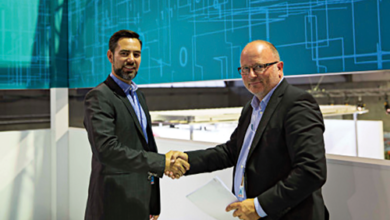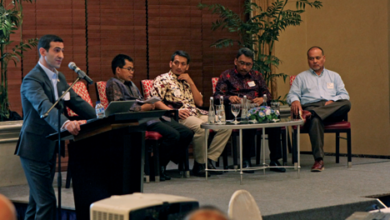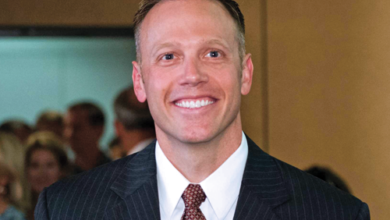Technology champions build up business case for MPD adoption while advancing automation, training
Easier rig integration is another focus, although service providers say having MPD-ready rigs can give contractors competitive edge in tough market
By Kelli Ainsworth, Editorial Coordinator

Although managed pressure drilling (MPD) continues to gain traction across the industry, it remains incumbent upon service providers and technology champions to build and prove a business case for MPD. This remains challenging due to the nature of the technology. One of its key benefits is minimizing or eliminating kicks and losses. However, proving that something didn’t happen can be difficult. “How do you quantify non-events? How do you quantify something that didn’t happen?” asked Per Christian Stenshorne, EC-Drill Product Line Manager for Enhanced Drilling.
When a business case is built, however, it can prove the significant savings associated with MPD, particularly in challenging well environments. Martin Culen, Director at Blade Energy Partners, cited an example from the North Sea. In the harsh environment of that region, a major operator undertook an analysis of how MPD could be used to reduce NPT. Even taking into account the time and cost of the required rig modifications, the operator found that it could increase the net present value of its assets by $1.5 billion. Another major operator in South America also performed an analysis and found that MPD could save them $1 billion across its rig fleet over a two-year period. “It made the business case a slam-dunk,” Mr Culen said.
Although drilling spend is falling drastically around the world due to low oil prices, enabling technologies like MPD could actually benefit in this environment. Per Cato Berg, Chairman of the IADC Underbalanced Operations and Managed Pressure Drilling Committee and Leading MPD Advisor for Statoil, said he believes the downturn could hasten the uptake of MPD as operators search for ways to make more wells economically viable. “The increased focus on total well costs will lead operators to look at innovative ways to increase efficiency and decrease risks, so this market could be a blessing in disguise for MPD,” he said. “Implementing MPD in suitable wells will decrease well costs by reducing NPT, and decreased well costs is exactly what we need right now.”
Drilling contractors can do their part by making more of their rigs MPD ready, either by building them that way from the beginning or by retrofitting existing rigs. “To have drilling rigs equipped for MPD from the start would be a huge advantage,” Mr Berg said. “If we could have MPD-ready rigs, that would increase the use of it.”
Further, he believes that some in the industry would like to see contractors shoulder more responsibility for MPD operations, rather than leaving them in the hands of MPD service providers. “The drilling contractor is responsible for well control,” he said. “Having a third party controlling the bottomhole pressure might not be optimal. It would be better if the drilling contractor has full control over what happens in the well.”
Building a business case
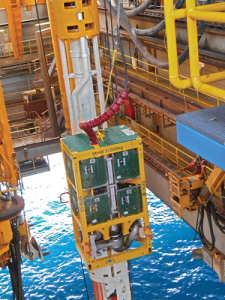
One advantage of MPD is that it can reduce hidden NPT, Mr Stenshorne said. For example, in conventional drilling, changing the mud weight could require a stop in drilling. This stop is not recorded as NPT because it’s part of a planned operation – yet, it nevertheless adds time to the overall operation.
Other advantages of MPD that are more easily quantifiable include the capability to navigate tight drilling windows, extend horizontal reach, mitigate losses and overcome drilling issues related to depletion. In addition to bringing cost savings, it can even enable an operator to drill a well that could not be drilled conventionally.
Enhanced Drilling’s EC-Drill uses the controlled mud level (CML) variant of MPD, which is based on the concepts of dual-gradient drilling. A CML system manipulates bottomhole pressure by changing the mud level in the marine riser using a subsea pump module, rather than by applying pressure at the surface using a rotating control device (RCD). Mud is returned to the surface through a separate return line. Changing the mud level in the riser, which is accomplished by adjusting the subsea pump speed, allows a CML system to change the effective mudweight in minutes without stopping drilling. The main component of the system is the subsea pump module, which is connected to the marine riser via a modified riser joint. The modified riser joint is fitted with redundant pressure transducers that are used to monitor the riser level.
A separate auxiliary line, which carries all mud and cuttings to surface, is also attached to the marine riser. A control system, which is fed information from the subsea pump and subsea transducers through an umbilical clamped to the riser, controls the speed of the subsea pump module. When the pressure transducers indicate that the mud level is below the desired level, the pumps are slowed down, allowing the riser to fill with more fluid, increasing the bottomhole pressure. When the mud level is too high, the pumps speed up to decrease the level in the riser, bringing down the bottomhole pressure.
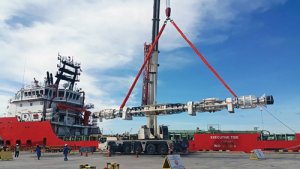
Over the years, the system has undergone what Mr Stenshorne calls a “step-wise” evolution. The first system was deployed from a jackup in 2008 using standard riserless mud recovery (RMR) equipment. An upgraded variant was deployed on a three-well deepwater campaign from a floater in Cuban waters of the Gulf of Mexico. The same RMR hardware and software were used but with an added degree of redundancy. Based on the learnings from this operation came the current version, which was commercialized in 2014. This system was tested and qualified in cooperation with Statoil and has been used on six wells in the US Gulf of Mexico and on the Norwegian Continental Shelf.
The ability to manipulate the mud level in the riser can also be beneficial during cementing operations, Mr Stenshorne said. It’s not uncommon to experience losses in cementing operations because cement has a higher density than drilling mud. When it is pumped into the annulus, the wellbore pressure changes. Additionally, cement creates higher equivalent circulating density (ECD) than during drilling. These changes limit the pump rate, as pumping at too high a rate could fracture the formation. However, lower pump rates could lead to the cement mixing with the fluid that was already in the annulus, preventing the cement from setting properly in order to form an effective barrier or provide zonal isolation.
EC-Drill works to reduce the mud level in the riser as cement is pumped in, thereby compensating for the pressure increase that typically occurs during cementing operations. This, in turn, allows for a higher pump rate. “The total effect is that you have more freedom when selecting your cementing properties. You can pump at a higher rate, which is generally accepted to increase your success rate, and you have reduced risk of fracturing the formation,” he said. “All of this leads to a higher probability of having a good cement job.”
Because no pressure is applied topside with CML drilling, the topside rig integration requirements are limited. EC-Drill doesn’t require any high-pressure topside equipment or piping, as is required for the applied backpressure version of MPD, Mr Stenshorne said. The main rig modification needed to accommodate the system is a modified riser joint, which sits in the riser string. Depending on availability, the time needed to deliver the EC-Drill specific equipment can be up to six months, with the actual rig installation being done in two to four weeks while the rig is operational. Once deployed, the CML system does not require any additional rig time to change out equipment.
Although EC-Drill can be easily integrated onto existing rigs, Mr Stenshorne said, having more MPD-ready rigs would still help to push adoption of the technology. “Ideally a rig should come built for this technology when it leaves the yard,” he said. Because building new rigs in the current market is highly unlikely, the focus is on retrofitting rigs. “It’s about how we can quickly and cost effectively get existing rigs ready for our technology. We’ve been working very hard on making our system modular because every rig is different.” For example, each of the components of the system is standalone and can be easily lifted onto and off of the rig. “There is a great deal of flexibility in where to place and integrate equipment,” Mr Stenshorne added. “In addition, there are some smaller components such as a top-fill pump and flow meters where an existing rig unit can be used if available.”

Although drilling contractors are not likely to order any more newbuilds in the near future, Mr Stenshorne said, in the long term, they may start to recognize the value of having MPD-ready rigs. “Drilling contractors need to differentiate themselves from the competition to win jobs, and MPD is one technology that can be used to make your rig more competitive,” he said. “I think that more drilling contractors are seeing that bringing MPD into their tenders can make them stand out in the bidding process.” The significance of MPD-ready rigs would become especially evident, he added, if the industry moves toward performance-based contracts. “If this happens, then for drilling contractors to have tools in their toolbox to make them more efficient, it’s going to be ever more important.”
In Q2 2014, Statoil used EC-Drill in the oil province of the Troll field on the Norwegian Continental Shelf where the operator had been struggling with mud losses. In 1,082 ft of water on a depleted field, the system was deployed from a semisubmersible and was used to drill three horizontal sections of a multilateral well with a total length of more than 30,000 ft. These sections saw a 70% reduction in mud losses compared with previous wells in the area, Mr Stenshorne said. “We estimate that equaled some $2 million to $2.5 million in mud savings alone.”
The reduction in mud losses also meant less damage to the reservoir and increased production. Overall, the subsea pump module was submerged for 89 days and performed more than 700 hours of drilling.
In 2015, Enhanced Drilling worked with Statoil again, this time in the US Gulf of Mexico. To prove the EC-Drill’s well control capabilities, this project targeted a deepwater exploratory well in an unconfirmed pore pressure regime. The operator performed numerous kick drills during this campaign by pumping fluid down the choke line into the well, without the crew’s awareness. The pressure sensors on the riser were able to detect flow anomalies almost instantly and at least 40-60 seconds faster than conventional flow-out measurements on surface, according to Enhanced Drilling.
Changes in the subsea pump speed also alerted the crew to a change in the mud flow. The riser itself essentially acted as a trip tank, and the crew monitoring riser volume was able to see the volume anomalies. “We detected all of the kicks, and we detected them more quickly than a conventional rig system,” Mr Stenshorne said. “Even small kicks were picked up close to a minute before it could be detected on return flow measurement on surface.”
Enhancing integration
Operators, especially in the deepwater market, are increasingly requesting rigs that are fully equipped with MPD systems, according to Weatherford. Since 2010, the company has equipped 20-plus deepwater and ultra-deepwater rigs with MPD systems in Brazil, Asia Pacific and Africa, noted Said Boutalbi, Secure Drilling Director for Weatherford. “I think we’ve turned the corner in terms of acceptance of the technology and the benefits of it,” he said. “We can’t say this is an emerging technology or it’s being adopted. I think it’s there for the long run.
“The technology is well understood by operators, so now the focus is working with drilling contractors and getting them more comfortable with integrating the system into their rigs,” he said. Mr Boutalbi points out that, due to the newness of MPD readiness, drilling contractors are still learning about the amount of planning required for MPD rig integration. For Weatherford, this means increasing its collaboration with contractors to make sure all parties are clear on what it takes to make a rig MPD ready, including the requirements that contractors themselves must take on.
Integrating an MPD system onto a rig presents multiple considerations, Mr Boutalbi said. First, there are dimensional constraints inherent to the rotary table, diverter and upper riser package. Depending on the type of MPD being used, careful consideration of topside manifold design, piping, cabling and instrumentation is required to ensure the system fits well onto the rig.
One integration challenge Weatherford has encountered is the requirement for a larger internal diameter (ID) of the upper riser package to allow placement of the RCD below the termination joint. To overcome this obstacle, Mr Boutalbi said, the company developed slimmer bearing assemblies – a workaround that is enabling deepwater rigs to be MPD-capable without major riser modifications.
The company is currently focused on upgrading its MPD systems to increase operational efficiency, reduce system complexity and further minimize barriers to technology adoption. “When you install and integrate an MPD system, it becomes part of the rig’s drilling equipment,” Mr Boutalbi said. “The expectation is that the drilling contractor will operate part of it and, in time, the entire system on their own without having Weatherford there. With that, we’re trying to put a lot of automation into the system so that it becomes a lot easier for the rig crew to operate it.”
In Q4 2015, Weatherford commercially released the OneSync software platform, which can be integrated with the company’s Microflux MPD control system to improve analysis, interpretation and control functionality during MPD operations. “It is a platform that allows you to plan, simulate and execute MPD all in one place,” Mr Boutalbi said. “It has the ability to control the entire MPD system and can incorporate other conventional drilling equipment into the system if need be.” The software platform has passed all of Weatherford’s internal qualification tests, as well as Det Norske Veritas (DNV) requirements.
The platform includes software for well planning, dynamic drilling simulation and operations. In MPD applications, the planning component includes well planning modules to improve the efficiency of pre-engineering simulations. The dynamic drilling simulation software is designed to generate predictive scenarios based on current well states and real-time data. The simulation software can also be used for MPD training, monitoring and drilling optimization. The operations software integrates with the Microflux control system to enhance control capabilities during MPD operations.
Weatherford is using the OneSync software platform to provide simulator-based MPD training. The company has also formed a partnership with Maersk Training to integrate the software into Maersk’s drilling simulators to allow for MPD and well control planning and scenario-based training. This will allow entire rig teams – including drilling contractor, operator and third parties – to receive well-specific MPD training.
Weatherford plans to release two new MPD technology systems in the near future. One is an MPD riser joint “that will be much more compact, lighter and easier to operate than what the industry is currently offering,” Mr Boutalbi said. It will also be easier to integrate onto a rig, he added. The other is a continuous flow system that is in the final qualification and field-testing stages. The system will allow fluid to continuously circulate in the well when making a connection. Issues such as kicks, wellbore instability and stuck pipe often occur when circulation is stopped to make a connection. “If you can maintain continuous flow, that gives you better control of your bottomhole conditions,” he said.
Closing knowledge gaps
Over the past 18 months, Blade Energy Partners has been looking at ways to improve influx control and circulation methods to enable more automated MPD systems. Using both static and dynamic simulators, the company has been working to understand how much pressure should be applied on the choke, and how quickly, to stop an influx once it’s detected. “Not applying enough pressure quickly can actually cause the influx to grow and perhaps become unmanageable,” Mr Culen said. On the other hand, “If you apply too much pressure too quickly, you could cause a large pressure spike in the wellbore and end up exiting the drilling window.”
The goal is to gain an understanding of how to apply surface backpressure, he said. A variety of factors affect the application of pressure – including temperature, pressure and flow indicators – to specify how much and how quickly pressure should be applied, which is currently done manually. “We’re actually seeing that there is a trend in the MPD service industry to increase the robustness of the choke controller, which is the brains of the operation,” Mr Culen said. “I believe once that is perfected, we’re going to reach the tipping point in the adoption of MPD systems.”
To truly push MPD into the mainstream, however, the industry also must increase knowledge and competency around the technology. Mr Culen, who serves on the IADC UBO and MPD Committee, said the group is developing an accredited training curriculum for MPD operations. The goal is to focus on influx management so courses can complement well control training.
The curriculum will have two levels. The fundamental level, intended for all personnel up to derrickman, will be an eight-hour module that introduces MPD concepts and equipment. Because many individuals undertaking this training will have experience only with conventional drilling, the course will be geared toward highlighting the key differences between conventional drilling and MPD. “It’s an intro to MPD, so people get a sense of how things are going to be different,” Mr Culen said.
A supervisory-level curriculum will target rig personnel from assistant driller and up, as well as service company personnel. This three-day course will include an influx management and special problems module. The certificate will be good for two years, after which supervisory personnel must retake the influx management and special problems module.
The committee has also been working on creating best practices for the main MPD techniques – surface backpressure with a surface BOP, surface backpressure with a subsea BOP, and pressurized mud cap with a subsea BOP. “By establishing best practices, we can help to ensure that companies who look to use these techniques for the first time can use them in a safe and efficient manner,” Mr Berg, the committee’s chairman, said.
Last year, the committee completed a best practices document for surface backpressure MPD using a surface BOP stack, one of the more commonly used techniques. That document is expected to be published by API as a Recommended Practice before summer. The best practices document for pressurized mudcap MPD with a subsea BOP has also been submitted to API for consideration as an official Recommended Practice document. The committee is now working on the best practices for surface backpressure MPD with a subsea BOP. Work on a best practice document for dual-gradient drilling (controlled mud level) will also soon commence.
While the uptake of MPD has been increasing to the point that the technology cannot be considered boutique anymore, it is also not yet universal. “There is still skepticism with respect to new risks which we have to overcome,” Mr Berg said. “Conveying success stories and best practices to the industry is a good way to overcome this.” In addition to sharing knowledge and success stories through best practices, the committee organizes the annual SPE/IADC MPD and UBO Conference, which has seen a steady increase in attendance over the years, Mr Berg said. This year’s conference will be held 12-13 April in Galveston, Texas. DC
Click here to view documents and guidance developed by the IADC UBO/MPD Committee.
Click here to register for the 2016 SPE/IADC Managed Pressure Drilling and Underbalanced Operations Conference and Exhibition.

